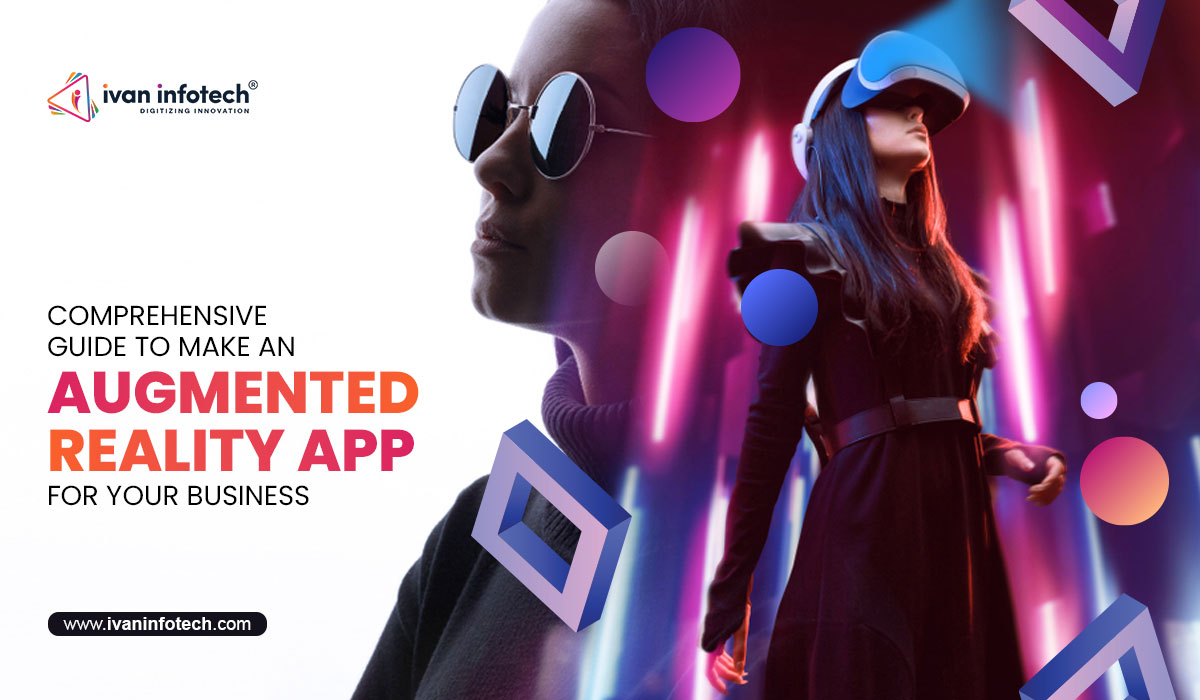
Augmented Reality App Development: TheUltimate Business Toolkit
The use and development of augmented reality have increased in recent years. This includes investment in the mobile hardware capabilities, interest in virtual experiences with metaverse and also increasing competition among the businesses.
Due to all these variables, the augmented reality market is set to reach a value of $500 billion within the year 2027, growing at a CAGR of 63% as per the Global markets. If you want to become a part of this growth, you should know about the process of Augmented Reality (AR) Software Development.
Different Types of Augmented Reality Apps
There are various augmented reality applications including markerless, location-based, superimposition AR solutions, and marker-based. Here are some of the applications you should check-
- Marker-Based AR
The applications make use of particular markers like the QR code or other images. The 3D contents in the apps are placed in the world that is relative to, on top of the marker.
For example, if you see the example Playstation 3 Wonderbook, this gaming peripheral will allow the players to view the spell book on the screen. The book will rotate and move when they are picking up the device and move it around too. The camera makes use of patterns as a reference for displaying the AR contents; technology is often used today on Snapchat and Instagram.
- Location-Based AR
When the users enter a particular location, the AR application makes use of that data to accurately display the virtual contents. This is the process to show the AR works. Apart from just displaying an object in relative space, the developers will show the objects in geographical space for the users to interact with. Technology-wise, location-based AR depends on the GPS, digital compass, and accelerometer. Some of the approaches to fulfill the position include BLE (Bluetooth low energy) beacons, low-range Wi-Fi Direct, VPS or the Visual Positioning System, UWB or Ultra wideband, and so on.
- Markerless AR
Instead of using the set patterns and codes for triggering contents, the markerless AR makes use of the camera for detecting the patterns in the environment as motion sensors to detect surfaces and place the 3D objects. It typically involves different technologies working together like GPS or other location tracking tools, digital compass, camera, depth sensors, and accelerometer.
All the latest devices are equipped with LiDAR and ToF for improving precision. So, the markerless AR is powered not just by the depth sensors and other positioning data, but also by ML algorithms placed on top of the data. This helps the users to have an accurate rendering of 3D contents and power up the illusion where the digital contents are subjected to the real world. An example of markerless AR is Pokemon Go.
- Superimposition AR
This type of AR includes the digital replacement of an object and then superimposing the virtual object on top. For example, an app that is used for digitally changing the colour of the couch can be said to superimpose AR.
The technologies for using the augmented reality app development will depend upon lots of factors like the type of hardware used, the available power unit of the device, and the type of application being used.
Augmented Reality Platforms for Mobile Platforms
Smartphones provide lots of advantages over the other available AR platforms. They are not just popular in the market but they are too portable. The use of AR in smartphones helps consumers to have better accessibility. Although the use of AR in mobile phones is not as immersive and powerful, it has the potential to be powerful and it is one of the most important augmented reality trends for keeping track of.
Apart from these, mobile AR is also an affordable way for businesses to join the metaverse trend. You can try out the solutions that will allow you to test the cosmetics or clothes before you make the final decision to buy. The augmented reality avatars and filters help the users to communicate with the brands virtually.
There are 3 approaches toward mobile AR that businesses should choose and they are-
- Native android AR applications with ARCore
- Cross-platform Apps
- Native iOS AR applications with ARKit
The native AR Software Development will allow the developers to take up the benefit of the device’s power. On the other hand, the cross-platform application will not be able to take advantage of powerful native features but they are helpful to reduce the development time to a greater extent. Making a similar app with the native development code on every platform will be expensive but when power and features are included, they become highly effective.
AR Development Tool Kits for iOS Devices
- Location Anchors
The location anchors will allow the developers to affix the virtual objects in the real world with the use of geographic coordinates.
- Depth API
The Depth API is another important feature powered by ARKit 4 that continues to play a vital role in ARKit 5 and ARKit 6. It makes use of hardware features for AR on mobile devices, the LiDAR scanner on iPad Pro and also iPhone 12 Pro, and the latest models.
AR Development Tool Kits for Android Devices
- Cloud Anchors
This tool will allow the users to place the virtual objects in the physical space that can be viewed by the other users on their devices. Google has made sure that Cloud Anchors will be seen by the users on iOS devices too.
- AR Faces
The ARCore will allow the developers to work with facial rendering by producing a 3D model of the same. The masks and filters will be applied after the user’s face gets identified. It is one of the most popular cases with AR faces in Android phones.
Subscribe to the Newsletter
Don’t lag behind in the ever-evolving age. Stay updated with all tech news and trends. We will not fill your inbox with spam mails. You will only receive updates about the cream contents.
Want Assistance with Software Development?
Anything you need in terms of software, you can count on us. With knowledge, skills and years of experience, we create tailor-made, integrated development solutions with high-end technologies.


Categories
Ai software solution
API Development Services
app development
Application Maintenance
AR And VR Software Development
AR Software Development
Artificial Intelligence
Asset Tracking
Automated system
Big Data
Block Chain Development
Blockchain Development Solution
cloud computing solutions
CMS Development Services
Construction Software Solution
CRM
custom web application
Digital Asset Management
Digital Marketing
Digital Services
Ecommerce Industry Solutions
ecommerce solution provider
Education Software Development
education software development Solution
Education Software Solution
ERP Software Development
Event Ticketing Software Solution
Finance Software Solution
Food and beverage software
Graphic Design
Healthcare software solution
hospitality software development solutions
hotel software solution
IMS
IOT
IT application development
IT Consultancy
IT services
IT solutions
Java
Java App Development
Lead Generation Services
Legal Software Development
mobile app design
opensource software development
pos software development Solution
Quality Assurance
Real estate software
Restaurant Software Solution
Retail IT Solutions
Retail Management Software
software development
Software Security
Software Testing
Sports Software Development
Supply Chain Software Solution
Transportation Software Development
Travel & Hospitality
UI and UX design
Uncategorized
Web Design
Web development service
Web Programming